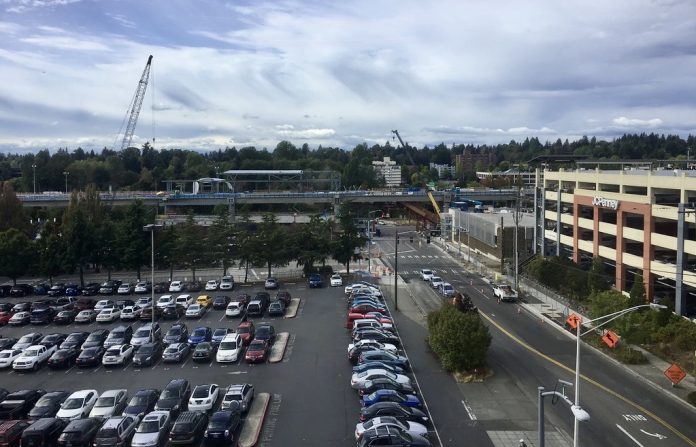
In November, the King County Council unanimously approved a plan to build 232 affordable homes and a daycare on a portion of the expansive County-owned park and ride sitting on over three acres of land adjacent to the Northgate light rail station, which opened October 2nd. The affordable housing development will take up just over an acre of the site, which in its totality could ultimately host well over 1,000 homes based on a 2017 study taking advantage of the site’s 240-foot zoning.
King County Metro’s plan, however, is to keep the rest of the site a park-and-ride through 2024, when Lynnwood Link will open, in order to meet parking demands in Northgate. Northgate Station will offer 14-minute train rides to Downtown Seattle, which is a big draw for both resident and park-and-ride commuter alike.
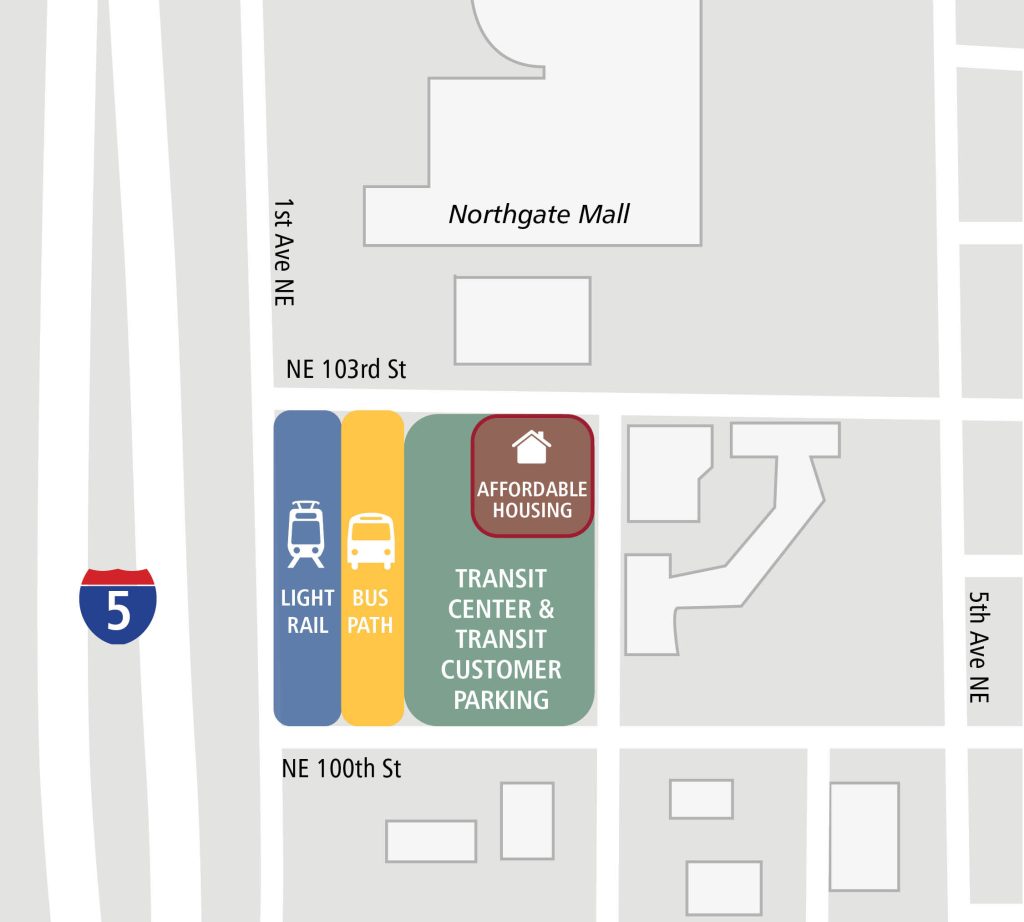
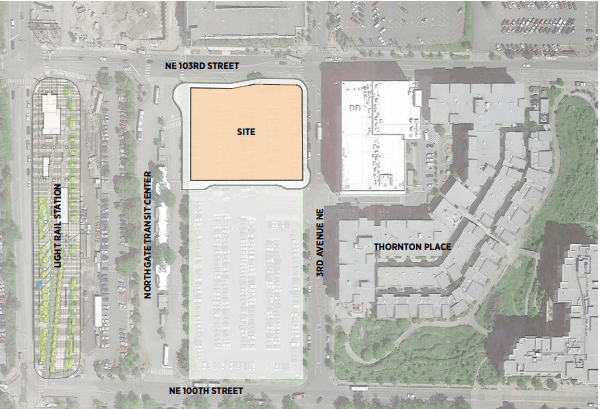
“Metro intends to hold the remaining more than two acres of surrounding property until at least 2024, which coincides with the opening of Sound Transit’s Lynnwood Link light rail station,” a Metro press release said. “At least for now, the rest of the land will continue to function as a park and ride. Over the next five years, Metro has the opportunity to look at the evolving service needs of the area and align the future of the property with plans for the transit-oriented development [TOD].”
Since the development timeline remained vague in that release, I followed up with Metro spokesperson Jeff Switzer to see if he could add clarity. “Metro will be evaluating our remaining property at Northgate and developing an approach to transit oriented development in 2022,” Switzer said in an email.
That suggests Metro may be trying to get a plan in place ahead of Lynnwood Link opening so that the next development can potentially move forward shortly thereafter. However, that will depend how smoothly the planning work goes this time around.
The 232-unit project the County Council has approved is still awaiting its first early design guidance meeting and Metro expects to break ground in 2023. That’s one year later than Metro’s February 2020 announcement (a delay likely linked to pandemic disruptions) and two years later than the initial plan, which hoped to time phase one’s opening with light rail opening in 2021. The County has also bumped up its contribution from $10 million to $20 million. Those numerous delays has lead to some consternation and frustration in North Seattle.
District 5 Councilmember Debora Juarez summed up the situation in 2018: “I’m disappointed that Northgate may become the textbook example of how not to do transit-oriented development. I thought we were going to be the shining example of how to do it.”
Considering how long just the smaller mid-rise project took to get out of the gates, waiting five years to start the next process would mean a high-rise project (which typically takes longer to build than mid-rise) wouldn’t be opening any time this decade. And that would be a shame for people hoping to maximize social housing near rapid transit so more working class people could benefit from these generational investments. Hopefully, Metro can chart a path to building out the site with as much affordable housing as possible as soon as possible.
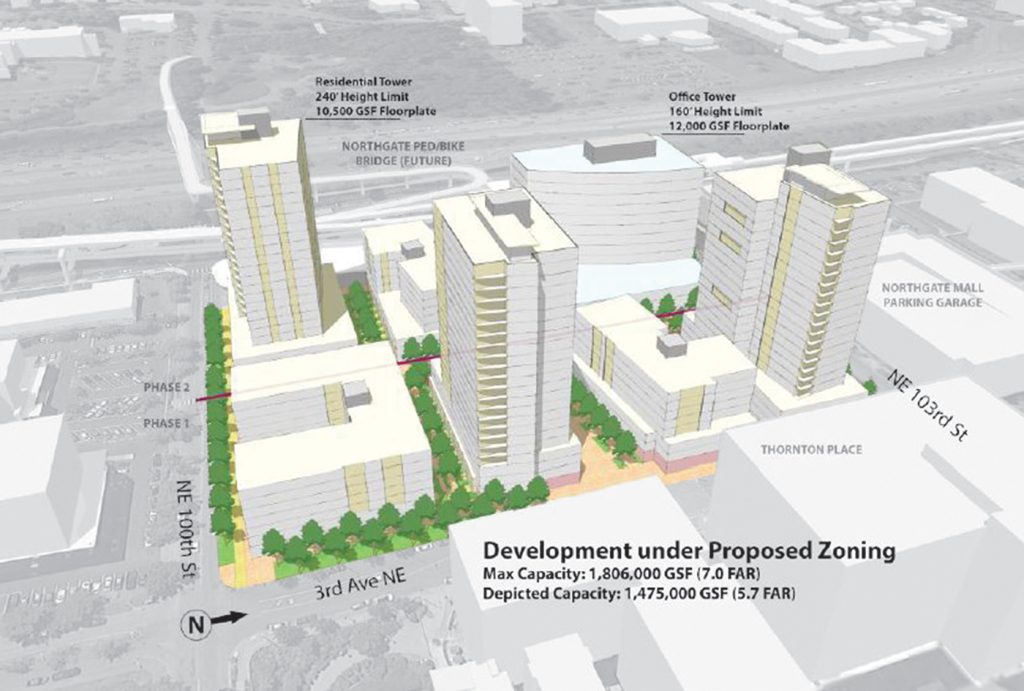
“Access to reliable mobility is fundamental to the success of our community. The opportunity to build affordable housing just steps from Metro’s Northgate Transit Center and the new Link Light Rail station will be life changing for the eventual residents of this building,” said County Councilmember Rod Dembowski in a statement ahead of approving the 232 homes. “This moment is the culmination of years of hard work by Metro, County staff and our partners, including those in the State Legislature, and I am excited to see it move forward and add new housing units to the growing Northgate community.”
That life changing opportunity could have reached 600 households and sooner if that planning process had gone more smoothly and favorably.
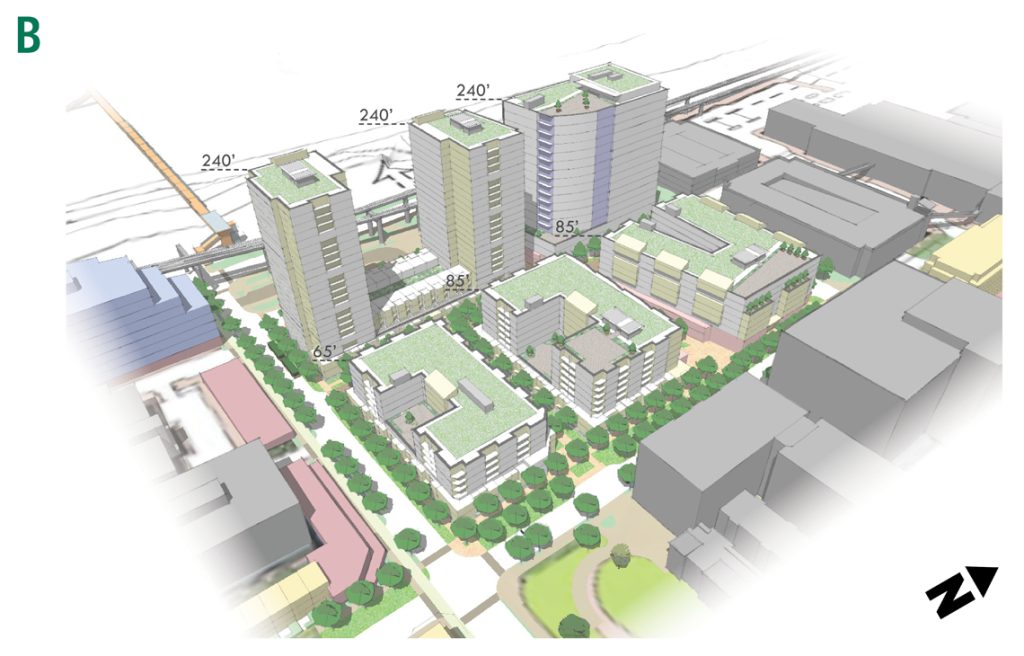
The first Request for Proposals (RFP) went in 2017, but ultimately Metro decided to run a second RFP process after not being satisfied with the two submissions it received. Stellar Holdings, one of two original bidders, won the second RFP process in 2019, but talks to finalize that deal broke down in 2020, and Metro pivoted to working with a nonprofit developer on a smaller portion of the site.
As a result, BRIDGE and Community Roots Housing (formerly Capitol Hill Housing) will collaborate to build affordable housing on about 48,000 square feet of the Northgate property. Community Roots will operate the site once completed.
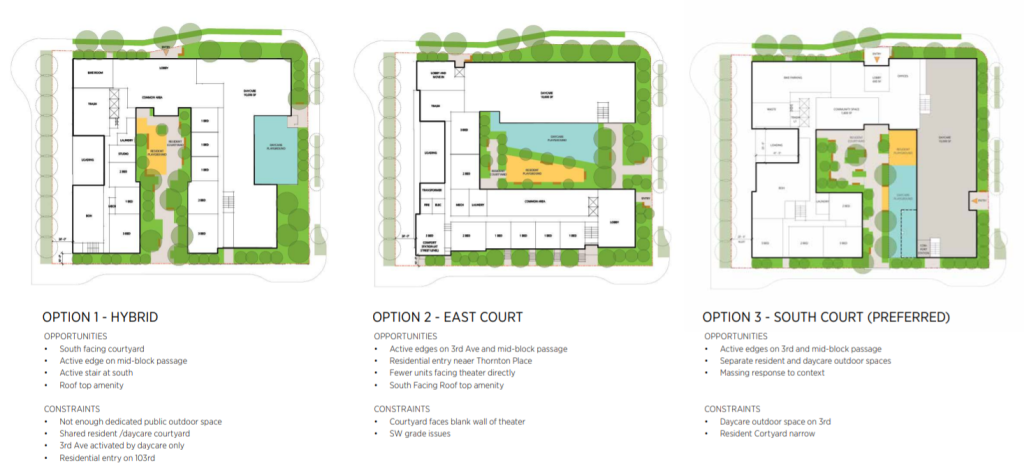
The question of whether market-rate high-rise development is feasible in Northgate hasn’t been settled and projects so far have been mid-rise apartments, as Shaun Kuo detailed in a roundup. But a 17-story tower going up in First Hill on a site that had been owned by Sound Transit has demonstrated that nonprofit developers can build highrises too — albeit after an affordable highrise-building hiatus of more than 50 years in the Seattle region.
If Metro isn’t satisfied with the mixed-income development offers it’s getting from for-profit developers, the simple solution is to work with nonprofit developers on the remainder of the site. This would require a major fundraising push, but it’s far better than squandering a large site right next to light rail. On the other hand, tower-builders might be getting more confident after a building blitz in the University District — two light rail stops to the south.
The lack of tower development in Northgate so far doesn’t necessarily show it’s infeasible. The reality is the high-rise zoned land belongs to basically just two land owners (the mall and Metro) and neither has forged ahead with using it to the fullest. 5th Avenue NE, where much of Northgate’s development activity has been thus far, has mid-rise zoning rather than high-rise zoning. The sprawling Northgate Mall has 145-foot zoning, but mall owner Simon Properties has focused on the Kraken Practice Complex rather than towers in its first phase of redevelopment. Towers could be coming in future phases, though nothing has been promised thus far.
Northgate could also be a good fit for mass timber towers, which would have quicker construction time than steel and concrete towers while also being a more sustainable alternative. Washington State updated its building code to allow 18-story mass timber towers back in 2018. Since the floor area ratio is capped at 7.0 on the Metro site, mass timber could likely max out the zoned capacity (roughly 1.8 million square feet for the entire site) even though it couldn’t quite hit the 240-foot height limit. Then again, Milwaukee is building a 25-story mass timber tower so upping the mass timber height limit could also clear the way for a larger project.
Doug Trumm is publisher of The Urbanist. An Urbanist writer since 2015, he dreams of pedestrian streets, bus lanes, and a mass-timber building spree to end our housing crisis. He graduated from the Evans School of Public Policy and Governance at the University of Washington in 2019. He lives in Seattle's Fremont neighborhood and loves to explore the city by foot and by bike.

